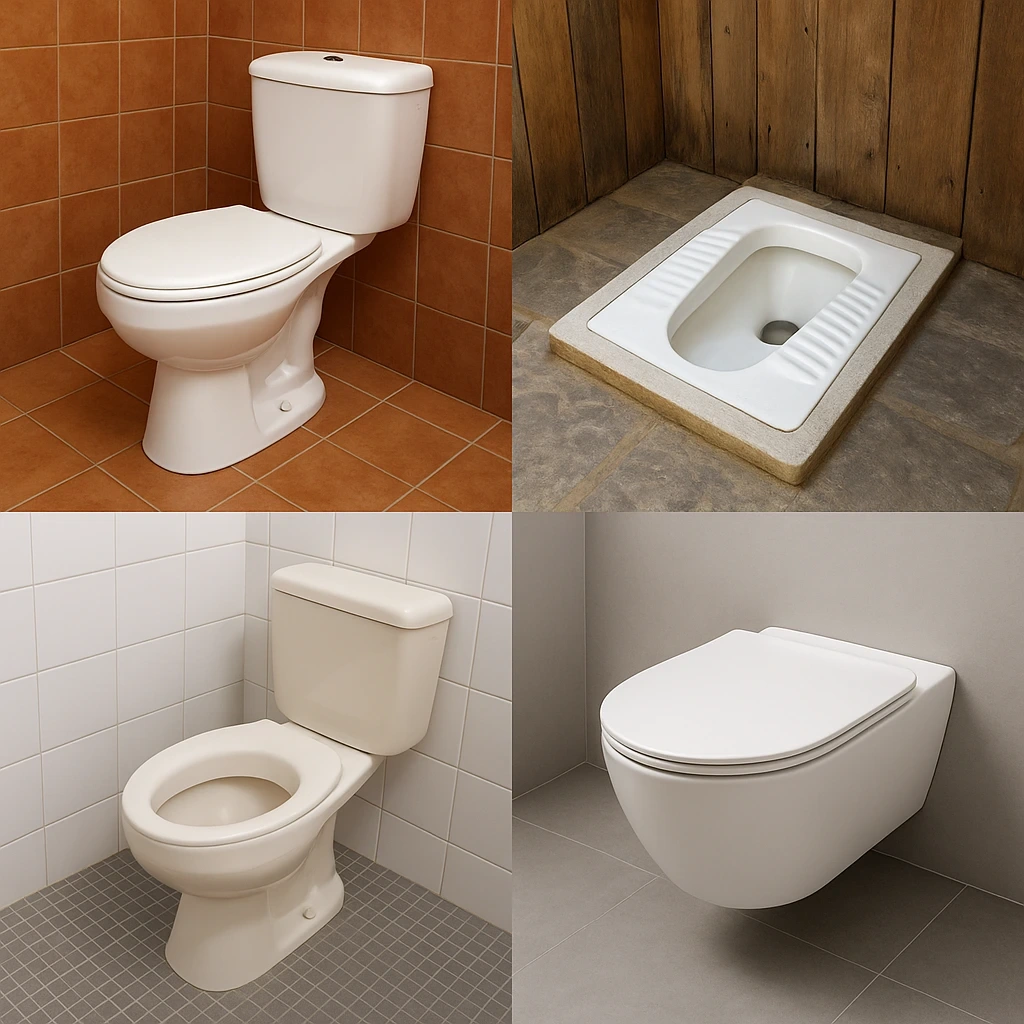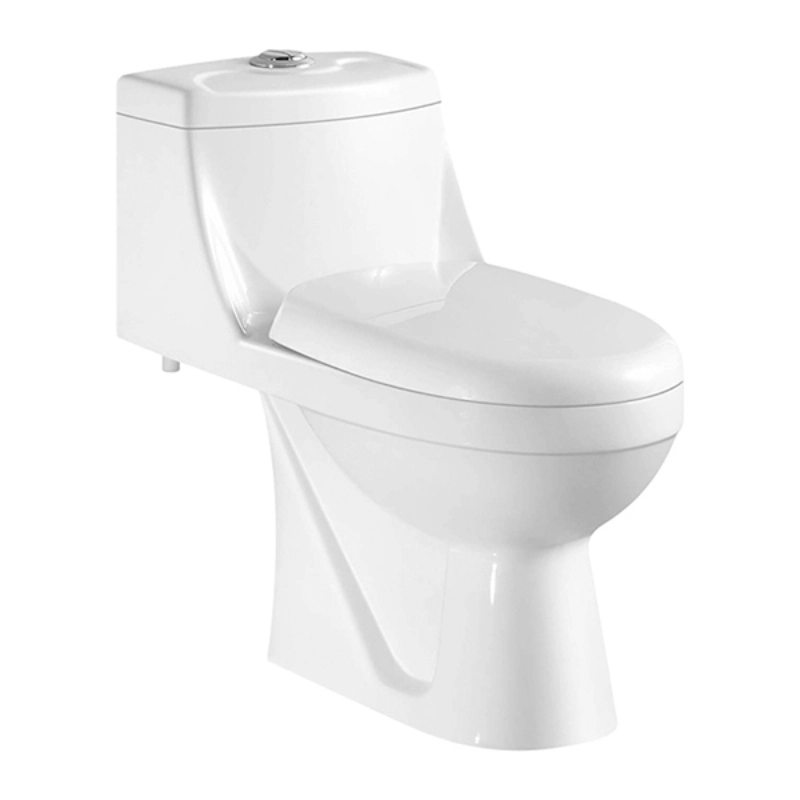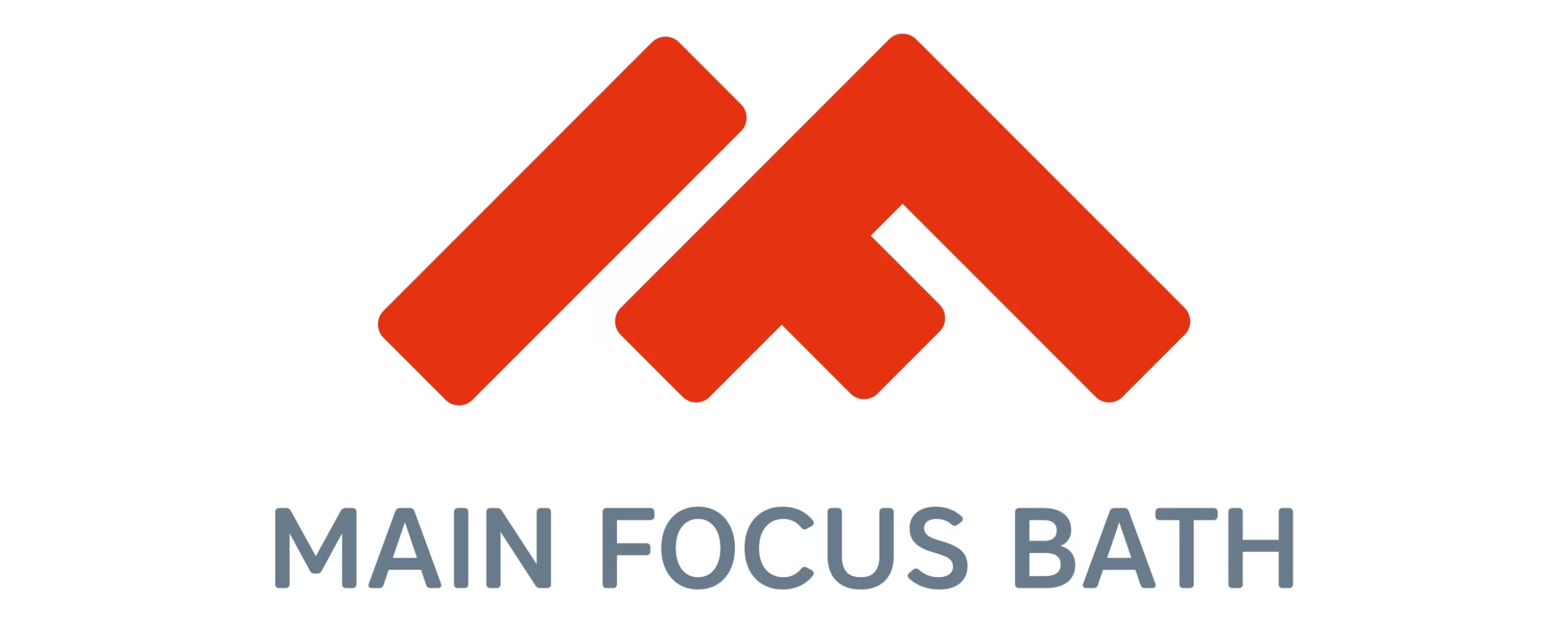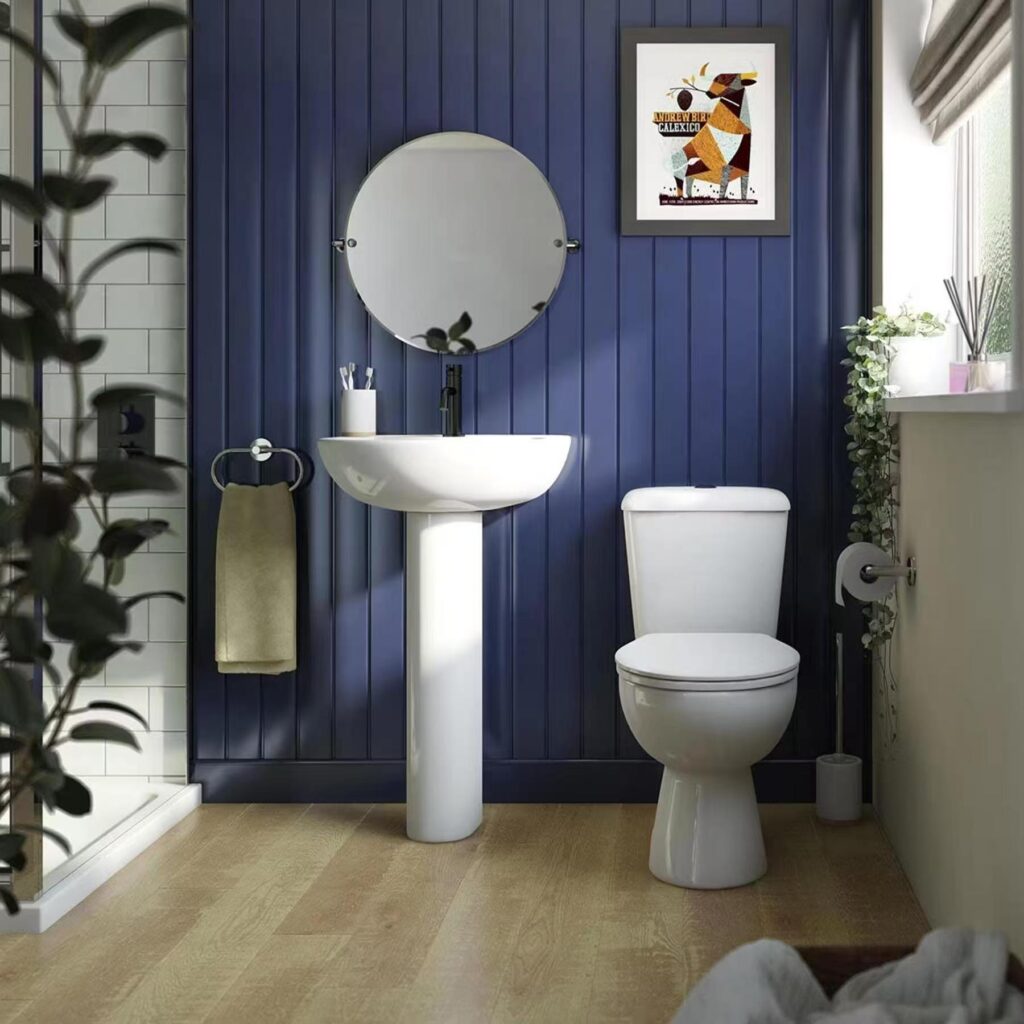مقدمة
Navigating the South American toilet market can feel like flushing money down the drain for unprepared exporters and suppliers. With diverse cultural preferences, from Brazil’s tech-savvy urbanites demanding smart toilets to Argentina’s surprising bidet obsession, understanding regional nuances is crucial for success.
At MFBath, we’ve seen firsthand how these unique market dynamics shape demand. Whether it’s eco-friendly designs gaining traction in Brazil and Argentina or Chile’s hotel sector seeking affordable luxury, the landscape is constantly evolving. This article dives into the top-selling toilet models across South America, uncovering the key trends and hidden opportunities that could make or break your expansion strategy in this vibrant market.
Exploring the South American Toilet Market Landscape
Hey there, fellow وير صحي enthusiasts! Frank Hsu here, your “go-to guy” for all things toilets at MFBath. Today, we’re diving into the fascinating world of South American toilets. Trust me, it’s more exciting than it sounds!
The South America toilets market is booming, and it’s no wonder why. With rapid urbanization and a growing focus on sustainability, the demand for modern, eco-friendly bathroom solutions is skyrocketing. Let’s break down what’s happening in this dynamic market.
Market Overview: A Flushing Success
The South American toilet market is on a roll, with projections showing impressive growth in the coming years. But what’s driving this surge? Let’s take a look at some key factors:
| Factor | Impact on Market | معدل النمو | Key Countries | Consumer Preference |
|---|---|---|---|---|
| Urbanization | عالي | 3.8% annually | Brazil, Colombia | Modern, space-saving designs |
| Sustainability | عالية جدا | 6.1% CAGR (eco-friendly) | Brazil, Argentina | Water-efficient models |
| Smart Technology | معتدل | 4.5% annually | Chile, Brazil | Bidet functions, auto-flush |
| Cultural Influences | معتدل | 2.7% annually | All regions | Varies by country |
| Economic Growth | عالي | 3.2% GDP growth | Brazil, Colombia, Chile | Premium, durable products |
As you can see, urbanization and sustainability are the big players here. Cities are expanding rapidly, and with that comes a need for efficient, modern sanitation solutions. At the same time, there’s a growing awareness of environmental issues, pushing demand for eco-friendly options.
Regional Variations: Different Strokes for Different Folks
Now, let’s talk about how demand varies across different countries. It’s not one-size-fits-all when it comes to South America toilets:
1. Brazil: As the largest market, Brazil is all about innovation. They’re leading the charge in smart toilet adoption.
2. Argentina: Here, it’s all about style meets sustainability. Argentinians love their eco-friendly options that don’t compromise on aesthetics.
3. Chile: Known for its tech-savvy consumers, Chile is seeing a rise in demand for high-tech toilet features.
4. Colombia: With rapid urban development, space-saving and efficient designs are top priorities here.
Emerging Trends: The Future is Now
Speaking of trends, two big ones are making waves in the South American toilet market:
1. Smart Toilets: These high-tech wonders are gaining traction, especially in urban areas. Features like automatic flushing, bidet functions, and even health monitoring are becoming more common.
2. Eco-Friendly Designs: With water conservation a hot topic, low-flow and dual-flush toilets are seeing a surge in popularity. In fact, the eco-friendly toilet segment is expected to grow at a CAGR of 6.1% through 2030.
“The South American toilet market is evolving rapidly, with a clear shift towards sustainable and technologically advanced solutions that cater to urban lifestyles and environmental concerns.”
For exporters and suppliers looking to make a splash in the South American market, understanding these trends is crucial. At MFBath, we’re staying ahead of the curve with our range of sustainable and innovative toilet designs. Whether you’re eyeing the bustling Brazilian market or the style-conscious Argentinian consumers, we’ve got options to suit every preference.
Remember, when it comes to South America toilets, it’s not just about functionality anymore. It’s about blending efficiency, sustainability, and style. So, are you ready to ride the wave of this exciting market? Let’s make a splash together!

Cultural Influences Shaping Toilet Design Preferences
Hey there, toilet enthusiasts! Frank Hsu here, your friendly neighborhood sanitary ware expert from MFBath. Today, we’re diving into a topic that’s more fascinating than you might think – how culture shapes toilet preferences across South America. Trust me, it’s not just about flushing; it’s about style, comfort, and even a bit of “bathroom bling”!
When it comes to South America toilets, one size definitely doesn’t fit all. Each country has its own unique twist on bathroom culture, influencing everything from design to functionality. Let’s take a whirlwind tour of toilet trends across the continent!
Brazil: Smart and Sleek
In Brazil, it’s all about embracing the future. Brazilians are head over heels for sleek, one-piece smart toilets. These high-tech thrones are packed with features that would make a smartphone jealous – we’re talking auto-flush, built-in bidets, and even mood lighting!
Why the love for smart toilets? It’s a perfect blend of Brazil’s tech-savvy culture and their appreciation for modern aesthetics. Plus, in a country known for its cleanliness, these all-in-one solutions tick all the boxes for hygiene and convenience.
Argentina: Bidet Bonanza
Moving south to Argentina, we find a country that’s serious about hygiene. Here, bidets aren’t just an option – they’re practically a way of life! This cultural preference has led to a surge in demand for toilets with integrated bidet functions.
Argentinians appreciate toilets that combine traditional bidet features with modern design. It’s all about getting that squeaky clean feeling without sacrificing style or space in the bathroom.
Colombia: Compact and Practical
In Colombia, particularly in urban areas, space is at a premium. This has led to a preference for compact, two-piece toilets that pack a lot of functionality into a small footprint.
Colombians are looking for toilets that are efficient, easy to clean, and don’t take up too much room. It’s a practical approach that reflects the country’s rapid urbanization and the need to make the most of limited space.
Chile: Affordable Luxury
Chile’s booming hospitality industry has created a unique demand in the toilet market. Here, it’s all about affordable luxury – toilets that look high-end but don’t break the bank.
Hotels and restaurants are looking for toilets that impress guests with their design and features, but also offer good value for money. It’s a balancing act between style and budget that’s driving innovation in toilet design.
| Country | Preferred Style | Key Features | Market Share (%) | Growth Rate (%) |
|---|---|---|---|---|
| Brazil | One-piece smart toilets | Auto-flush, bidet function, LED lighting | 35 | 7.2 |
| Argentina | Bidet-integrated toilets | Adjustable water pressure, heated seats | 28 | 6.5 |
| Colombia | Compact two-piece toilets | Space-saving design, dual flush | 22 | 5.8 |
| Chile | Mid-range luxury toilets | Sleek design, water-saving technology | 15 | 4.9 |
| Other Countries | Various | Mix of traditional and modern features | 10 | 3.5 |
At MFBath, we’re all about embracing these cultural nuances. Our range of customizable one-piece and bidet-integrated toilets are a perfect fit for markets like Brazil and Argentina. We understand that the best-selling toilets in South America aren’t just about functionality – they’re a reflection of local culture and lifestyle.
“The diversity in toilet design preferences across South America reflects a rich tapestry of cultural influences, from technological advancements to traditional hygiene practices.”
But here’s a hidden gem for you: across all these countries, there’s a growing trend towards eco-friendly designs. It seems that environmental consciousness is becoming a unifying cultural factor across South America. At MFBath, we’re riding this wave with our range of water-efficient models.
So, whether you’re supplying sleek smart toilets to tech-loving Brazilians or compact models to space-conscious Colombians, remember – in South America, a toilet isn’t just a toilet. It’s a cultural statement!

Top-Selling Toilet Models and Their Features
Hey there, toilet aficionados! Frank Hsu here, your friendly neighborhood sanitary ware expert from MFBath. Today, we’re diving into the “crème de la crème” of South America toilets. Let’s explore the top-selling models that are making a splash in bathrooms across the continent!
Global Brands: Premium Powerhouses
When it comes to high-end toilets in South America, three names stand out: Kohler, Toto, and Roca. These global giants have captured the hearts (and bathrooms) of South American consumers with their premium offerings. Let’s take a closer look:
| Brand | Popular Model | Key Features | Price Range (USD) | Market Share (%) |
|---|---|---|---|---|
| Kohler | Veil Intelligent Toilet | Touchscreen remote, UV sanitization | 4,000 – 6,000 | 18 |
| Toto | Neorest NX2 | Auto open/close, heated seat, bidet | 5,000 – 7,000 | 15 |
| Roca | In-Wash Inspira | Integrated shower toilet, LED nightlight | 2,500 – 4,000 | 12 |
| MFBath | Smart One-Piece | Bidet function, water-saving flush | 1,500 – 3,000 | 8 |
| Local Brands | Various | Basic features, affordability | 200 – 1,000 | 47 |
These premium models are packed with features that would make James Bond’s Q Branch jealous. We’re talking about toilets that practically run themselves!
Local Heroes: Affordable Alternatives
While global brands dominate the luxury segment, local manufacturers are giving them a run for their money with affordable and customizable alternatives. These brands understand the South American market and offer features that resonate with local preferences:
1. Corona (Colombia): Known for their water-efficient models that don’t compromise on performance.
2. Celite (Brazil): Offers a wide range of styles, from traditional to modern, at competitive prices.
3. Ferrum (Argentina): Specializes in durable, no-frills toilets that are perfect for both residential and commercial use.
Features That Flush the Competition
So, what makes these toilets the best-selling models in South America? It all comes down to three key factors:
1. Water Efficiency: With growing environmental awareness, low-flow and dual-flush options are more popular than ever.
2. Smart Technology: From heated seats to automatic flushing, tech-savvy consumers are loving these high-tech features.
3. Durability: South American buyers value longevity, making sturdy construction a top selling point.
Price Points: Something for Everyone
The South America toilets market caters to all budgets. While premium models can set you back several thousand dollars, there are plenty of budget-friendly options that don’t skimp on quality. Here’s a quick breakdown:
- Premium: $2,500 – $7,000+
- Mid-range: $500 – $2,500
- Budget: $200 – 500 دولار
“The diversity in toilet offerings across South America reflects a market that values both innovation and affordability, catering to a wide range of consumer preferences and budgets.”
At MFBath, we’re proud to offer a range that competes with the big names while keeping prices accessible. Our ceramic one-piece and intelligent toilets bring premium features without the premium price tag, making us a strong contender in this competitive market.
Remember, when it comes to South America toilets, it’s not just about the flush – it’s about finding the perfect balance of features, style, and price. Whether you’re team Kohler or rooting for the local underdogs, there’s a throne out there for everyone!

Eco-Friendly Toilets: Sustainability Trends and Opportunities
Hey there, eco-warriors and bathroom enthusiasts! Frank Hsu here from MFBath, ready to dive into the “green revolution” happening in South American bathrooms. Let’s explore how sustainability is reshaping the toilet landscape and creating exciting opportunities for environmentally conscious businesses.
The Rise of Low-Flow and Composting Toilets
Brazil and Argentina are leading the charge when it comes to eco-friendly toilets in South America. These countries are seeing a surge in demand for low-flow and composting toilets, driven by a combination of environmental awareness and government regulations.
Low-flow toilets are becoming increasingly popular due to their water-saving capabilities. These efficient models use significantly less water per flush compared to traditional toilets, making them a hit in water-scarce regions. Meanwhile, composting toilets are gaining traction in rural areas and eco-lodges, offering a sustainable solution where traditional plumbing might not be available.
Regulatory Impact on Toilet Manufacturing
Environmental regulations are playing a crucial role in shaping the toilet market across South America. Many countries have implemented strict water efficiency standards, pushing manufacturers to innovate and develop more sustainable products.
| Country | Water Efficiency Standard | Implementation Year | Market Impact (%) | Popular Eco-Model |
|---|---|---|---|---|
| Brazil | 6L per flush max | 2018 | 35 | MFBath EcoFlush 3/6L |
| Argentina | 4.8L per flush max | 2020 | 28 | Roca W+W |
| Chile | 4.5L per flush max | 2019 | 22 | Toto Aquia IV |
| Colombia | 5L per flush max | 2021 | 18 | Corona Eco Dual Flush |
| Peru | 6L per flush max | 2022 | 15 | Trebol Eco Plus |
At MFBath, we’ve embraced these challenges, developing water-saving toilet models that not only meet but exceed regulatory requirements. Our EcoFlush series, for instance, offers dual-flush options that use as little as 3 liters for a half flush and 6 liters for a full flush, making them a perfect fit for markets like Brazil and Argentina.
Consumer Awareness Driving Demand
It’s not just regulations pushing the eco-friendly trend – consumers are becoming increasingly aware of environmental issues. This heightened consciousness is driving demand for toilets made from sustainable materials and manufactured through eco-friendly processes.
We’re seeing a growing interest in toilets made from recycled ceramics, as well as models that incorporate biodegradable components. Some consumers are even looking for toilets with carbon-neutral manufacturing processes!
Success Stories: Eco-Friendly Toilets in Action
Let’s look at a couple of case studies that showcase the success of eco-friendly toilet deployments in South America:
1. São Paulo’s Water-Saving Initiative: The city replaced over 300,000 old toilets in public buildings with low-flow models, resulting in a 30% reduction in water consumption.
2. Eco-Lodge in Patagonia: A remote lodge installed composting toilets, reducing water usage by 80% and providing valuable compost for their organic garden.
“The shift towards eco-friendly toilets in South America reflects a growing environmental consciousness, driven by both regulatory pressures and consumer demand for sustainable bathroom solutions.”
At MFBath, we’re excited to be part of this green revolution. Our range of water-saving and eco-friendly toilets is designed to meet the evolving needs of the South America toilets market. We’re not just selling toilets; we’re contributing to a more sustainable future, one flush at a time!
For suppliers and exporters looking to make a splash in the South American market, focusing on eco-friendly options is more than just a trend – it’s a necessity. With our innovative designs and commitment to sustainability, MFBath is your perfect partner in navigating this exciting landscape.
Remember, in the world of eco-friendly toilets, every drop saved counts. So, are you ready to ride the green wave with us?

Optimizing Supply Chains for South American Markets
Hey there, toilet traders and sanitary ware suppliers! Frank Hsu here from MFBath, ready to dive into the “nitty-gritty” of getting those porcelain thrones to South American bathrooms efficiently and cost-effectively. Let’s flush out some strategies to overcome the unique challenges of this market!
The High Cost of Shipping: A Real Pain in the… Wallet
Let’s face it – shipping costs in South America can be a real headache. With complex customs procedures, varied regulations across countries, and sometimes tricky infrastructure, getting South America toilets from point A to point B can feel like navigating a maze. But don’t worry, we’ve got some tricks up our sleeve to help you streamline your logistics.
Streamlining Logistics: Think Local, Act Global
One of the best ways to cut down on those pesky shipping costs is to think locally. Here’s how:
- Local Distributors: Partner with regional distributors who know the lay of the land. They can help navigate local regulations and provide valuable market insights.
- Strategic Warehousing: Set up warehouses in key locations. This can significantly reduce delivery times and costs for your best-selling toilets in South America.
- Bulk Shipping: Consolidate shipments to reduce per-unit costs. It’s like buying in bulk at the supermarket, but for toilets!
Partnering for Success: It Takes a Village
Building strong partnerships is crucial for cracking the South American market. Here’s who you should have on your team:
- Local Retailers: They’re your frontline troops in understanding customer preferences.
- Customs Brokers: These folks can help you navigate the sometimes murky waters of import regulations.
- Logistics Companies: Find partners with experience in handling fragile goods like ceramics.
Case Study: MFBath’s Supply Chain Success
Let me share how we at MFBath have optimized our supply chain for the South American market:
| Strategy | Implementation | Result | Cost Reduction | Time Saved |
|---|---|---|---|---|
| Local Warehousing | 3 hubs in Brazil, Argentina, Colombia | Faster deliveries, lower shipping costs | 25 ٪ | 5-7 days |
| Distributor Partnerships | 10 key partners across the region | Better market penetration, local expertise | 15 ٪ | 10-14 days |
| Customization Options | On-demand modifications at local warehouses | Reduced inventory, increased flexibility | 20 ٪ | 3-5 days |
| Bulk Shipping | Quarterly large shipments to main hubs | Lower per-unit shipping costs | 30 ٪ | ن/أ |
| Digital Inventory Management | Real-time tracking across all locations | Optimized stock levels, reduced waste | 10 ٪ | 2-3 days |
By implementing these strategies, we’ve managed to reduce our overall logistics costs by 35% and cut delivery times by up to two weeks!
“Successful supply chain optimization in South America requires a blend of global strategy and local knowledge, enabling suppliers to navigate regional complexities while maintaining cost-efficiency.”
At MFBath, we’re not just about selling toilets; we’re about providing comprehensive solutions. Our expertise in tailored logistics, including customization options and strong partnerships with local distributors, has been key to our success in the South American market.
Remember, when you’re putting together your buying guide for toilets in South America, don’t forget to factor in these supply chain considerations. A great toilet is only as good as its ability to reach the customer efficiently!
So, are you ready to flush away those logistics headaches and make a splash in the South American market? With the right strategy and partners, you’ll be on your way to toilet trading triumph in no time!
خاتمة
After diving deep into the South American toilet market, it’s clear that this isn’t just about selling porcelain thrones – it’s about understanding a diverse, dynamic landscape shaped by cultural nuances and growing environmental consciousness. From Brazil’s tech-savvy urbanites to Argentina’s bidet enthusiasts, each country presents unique opportunities for savvy suppliers.
At MFBath, we’ve seen firsthand how adapting to these regional preferences can make or break success. Whether it’s water-efficient models for eco-conscious Chileans or compact designs for space-strapped Colombians, the key is flexibility and localization. And let’s not forget the **”تغيير اللعبة”** – optimizing your supply chain can slash costs and delivery times, giving you a serious edge in this competitive market.
So, fellow toilet traders, are you ready to make a splash in South America? Remember, in this market, success isn’t just about the flush – it’s about understanding the culture, embracing sustainability, and delivering the right throne to the right customer, efficiently and cost-effectively. Let’s revolutionize South American bathrooms, one innovative toilet at a time!
التعليمات
-
Q1: What are the best-selling toilets in South America?
A1: The best-selling toilets in South America often include models from brands like Corona, TOTO, and others known for their durability and eco-friendly features. They cater to local needs and preferences for water-saving designs.
-
Q2: What types of toilets are common in South America?
A2: Common types of toilets in South America range from conventional floor-mounted options to modern wall-mounted fixtures. Many regions also utilize eco-friendly toilets that minimize water consumption.
-
Q3: Are eco-friendly toilets popular in South America?
A3: Yes, eco-friendly toilets are gaining popularity in South America as many consumers prioritize sustainable bathroom designs, including water-saving fixtures and natural materials.
-
Q4: What is the toilet paper etiquette in South America?
A4: In South America, it is generally advised not to flush toilet paper due to plumbing systems that may be unable to handle it. Most bathrooms provide trash cans for disposal.
-
Q5: How do toilet designs vary across different South American countries?
A5: Toilet designs in South America vary significantly based on local traditions, resources, and environmental conditions, with certain countries preferring specific styles and functionalities.
-
Q6: Do toilets in South America have special features?
A6: Many toilets in South America feature eco-friendly technologies such as low-flow flush systems, and some are designed to handle high humidity and temperature variations.
-
Q7: What factors influence toilet market trends in South America?
A7: Market trends for toilets in South America are influenced by factors such as environmental concerns, urbanization, economic conditions, and consumer preferences for modern, efficient designs.
-
Q8: Is there a demand for smart toilets in South America?
A8: Yes, there is an increasing demand for smart toilets in South America, particularly in urban areas, as consumers seek advanced features that offer convenience and improved hygiene.
روابط خارجية
- 7 Toilets From Around the World
- Learning Bathroom Etiquette in Different Countries
- The Traveler’s Guide to Toilets around the World
- South & Central America Smart Toilet Market Forecast to 2028
- The Unexpected Toilet Rule Tourists Need To Know Before Visiting South America
- Avoid These Embarrassing Bathroom Mistakes When Visiting Different Countries





